Table of Contents

El cilantro, also known as coriander herb outside of the United States, is not just an ordinary herb.
It is full of nutrients and adds a unique and special flavor to almost any dish.
But did you know that the leaves and the grains of this plant have different compositions?
This may explain why we use “coriander” to describe the grains while we call the leaves & stems “cilantro”.
In this article, we gathered all the information you need to learn about the history of el cilantro, the different types, the nutritional values, the health benefits and side effects, the precautions you need to know before you consume el cilantro alongside tips on how to buy + use + store them.
Random facts about el cilantro:
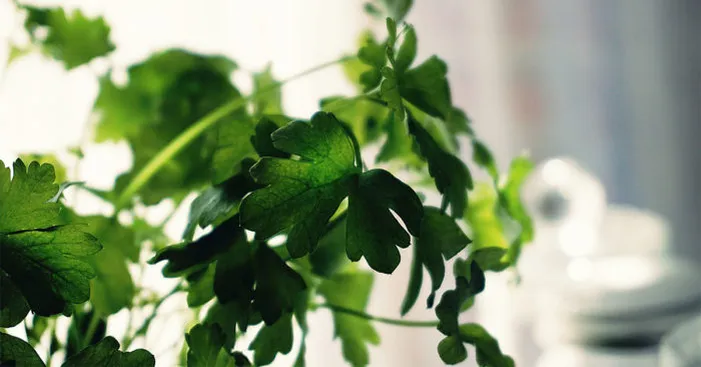
What is El Cilantro?
El Cilantro is a type of herb that goes by the scientific name Coriandrum Sativum which belongs to the Apiaceae family.
This same family covers many popular plants including carrots, parsley, celery and caraway, and cumin.
In the United States, we use the term “El cilantro” to refer to the leaves and the stems only while we use the term “coriander” to refer to the grains.
However, in the rest of the world, they just use “coriander” and “coriander grains” to refer to the parts of the plant.
The shape of this herb is very similar to parsley and sometimes even tricky, especially for those who aren’t familiar with it.
In fact, El Cilantro goes by many different names, and among those is Arabic, Chinese or Mexican parsley.
It grows stems that could reach 25 inches in height while the roots remain shallow and grow close to the soil surface.
History of cilantro:
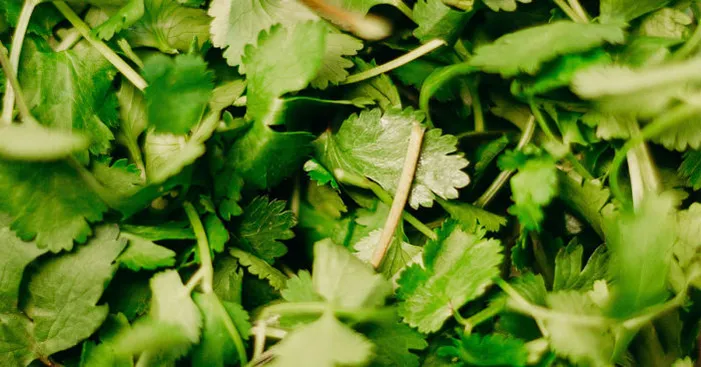
For more than 5000, people used El cilantro in both cooking and medicines.
For instance, the Ancient Egyptians used to put the grains of this plant in the tombs of Pharaohs as they genuinely believed the king plant them in the afterlife.
Also, in Chinese culture, they believe that this plant can make someone immortal.
In other parts of Asia, El Cilantro grains were added to love potions because of their aphrodisiac effects.
The leaves and stems of this plant have a very pronounced odor which is why it was long used as an essential spice.
Since the old times, Egyptians used the leaves of this plant in salads, soups, fish dishes, marinades, and sandwiches.
In addition, El cilantro is the most popular spice for a variety of dishes in Caucasian cuisine.
Different types:
Thorny Cilantro:
Botanically known as Eryngium Foetidum, this type is very famous in many Asian and Caribbean dishes.
In the United States, people refer to this type as “Culantro” or “Mexican coriander” and it is different from cilantro.
For instance, Culantro has longer dark-green leaves that resemble lettuce and grow up to 2 inches wide.
Flavor-wise, Thorny cilantro has a stronger flavor and can be used in the same way you use other herbs.
Common El Cilantro:
Just like the name suggests, this is the most common type in the United States and it is also the most used one.
This type is always compared to parsley even though the only similarity is in the shape.
In fact, parsley has a mild taste compared to how the spiciness of El cilantro herb.
For those who truly value their spices, this type is best planted at home and used as fresh as possible.
Vietnamese Cilantro:
As one of the most unique types of el cilantro, the Vietnamese cilantro has pointed leaves that resemble small bay leaves.
This herb goes by the scientific “Persicaria odorata” a genus that belongs to the “Polygonaceae” plant family.
In other words, Vietnamese cilantro is not even scientifically related to the common cilantro.
Nonetheless, you can still use this type in the same way you use your other herbs in your salads, soups, noodles, marinades…
It is a very good addition to many dishes including Pico, Gallo, and Ceviche.
Confetti Cilantro:
This herb is actually an improved type of el cilantro and it is even known botanically as Coriandrum Sativum “confetti”.
This variety has a milder flavor with a lower lime flavor and is a bit sweeter than the usual cilantro.
In terms of height, the plant has the same height as the common variety but the leaves are more like dill.
The confetti cilantro was made to produce a cold-resistant plant with a milder flavor to make the herb appeal to more people.
People use confetti cilantro in fresh sauces, salads, gazpachos, and even fish dishes.
Calypso cilantro:
Going by the same scientific name as the regular El cilantro, the calypso type has gained popularity in recent years.
This is because usual cilantro is a biennial plant that takes more than 2 months to start to produce edible leaves and stems.
However, the Calypso variety takes only 4 weeks to start producing leaves with a higher yielding than the common cilantro.
As for the shape and uses of the calypso cilantro, it has slightly larger leaves and can be used in the same as other herbs.
Other types of cilantro:
- Santo cilantro.
- Holly cilantro.
- Terra cilantro.
- Moroccan cilantro.
- Costa Riccan cilantro.
- Delfino cilantro.
The controversial reality of el cilantro:
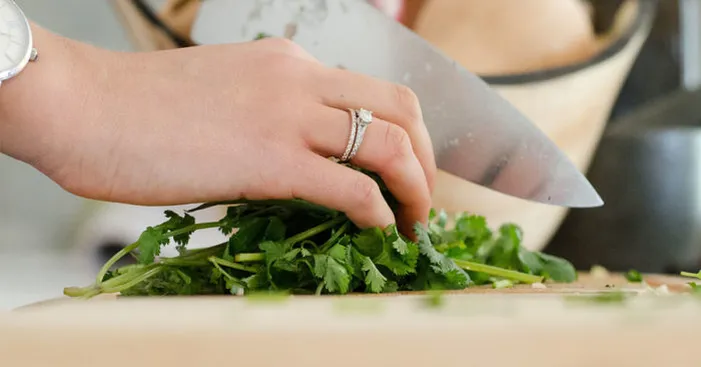
Across the world, some people love el cilantro and want to consume it in the form of herbs or grains in every recipe.
Nonetheless, some people hate the fragrance of this plant and would never want to consume it.
So why do some people really love el cilantro while others really hate it? Is there a scientific explanation?
The answer is yes!
In fact, an American survey shows that about 3% of Middle Eastern and Latinos hate cilantro while 21% of Asians hate it.
According to another American study, people who hate el cilantro tend to have different genes.
More specifically, these people have different olfactory receptor genes OR6A2 which affects their sense of smell.
As a result, these people have a very sensitive sense of smell that makes them hate strong aromas like cilantro aroma.
These people describe the taste of cilantro as being “soapy”, but why is that?
Well, results show that cilantro and soap both have “aldehyde” which gives cilantro its strong aroma.
So, if you happen to hate el cilantro, it’s not just you and this means you’re among the minority of people who can’t stand this plant.
Nonetheless, the majority of people love el cilantro because of the same unique fragrance and would include it in most of their recipes.
El cilantro nutritional values and health benefits:
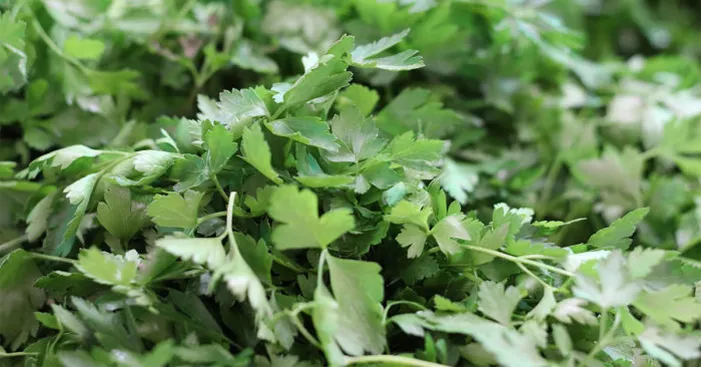
Nutritional values:
The herb is very rich nutritionally offering antioxidants, minerals, B vitamins, and dietary fibers.
In fact, these nutrients are usually concentrated in the stems and leaves which are the edible parts of this plant.
El cilantro is also a great source of minerals with the most abundant ones being phosphorus, iodine, and potassium.
Even though 90% of the El cilantro is water, it also offers a bit of plant-based carbs and proteins.
However, the most unique content of this herb is “decyl aldehyde” which is a derivative of starch responsible for the herb’s distinctive aroma.
Health benefits:
Health benefits of el cilantro leaves and stems:

Treats diarrhea:
The coriander plant contains essential oil components including linalool and borneol which support bowel movement.
These compounds are very effective against diarrhea, especially the ones caused by fungal activities.
In fact, it offers alpha-pinene, beta-phellandrene, limonene, borneol, and cineole which all have anti-fungal and anti-bacterial effects.
In addition, these powerful bioactive compounds can also prevent vomit, other stomach disorders, and nausea.
Fresh el cilantro is also a great appetizer before main dishes to stimulate the appetite.
Help with canker sores:
With powerful anti-septics like citronellol, el cilantro can be really effective against canker sores.
Consuming fresh coriander leaves not only freshens up the breath but also speeds up the healing process of mouth sores.
Even though traditional medicine uses this herb for mouth benefits as an antiseptic in toothpaste.
In fact, before toothpaste become a thing people used to chew on a couple of coriander grains to treat bad breath.
Protects from salmonella:
As one of the most famous bacteria, Salmonella is responsible for a dangerous foodborne illness.
Therefore, we need to make sure that at least some of the food can protect us from possible food-borne illnesses.
In this sense, el cilantro offers powerful antibiotic properties.
In fact, this component is two times more effective than conventional salmonella treatments.
Offers anti-allergic properties:
Several studies show the great anti-histamine properties of the el cilantro herb.
For instance, consuming this herb can reduce the bad symptoms of seasonal fever and cold.
Thanks to its rich oil content, el cilantro can reduce allergic reactions to insects and foods.
Preventing dangerous symptoms like anaphylaxis will protect you from experiencing the extreme life-threatening effect of allergies.
This is very beneficial, especially for those who already have an allergy but they still don’t know that yet.
Benefits for women:
El cilantro is a good source of vitamin C which has a double beneficial effect on women specifically.
In fact, ascorbic acid (vitamin C) improves Iron absorption which women often lack.
Being also a good source of vitamin A, this herb can help maintain a good healthy reproductive system.
In addition, it also offers many antioxidants and phenols which can improve skin elasticity, make it firm, and prevents wrinkles.
Women with menstruation disorders can also start including more coriander in their diet to help them deal with this issue more naturally.
Children benefits:
Many doctors recommend giving boiled El cilantro to toddlers older than 8 months and introducing the herb raw when the kids are 2 years old.
For a little baby growing up, every essential nutrient is even more essential as they need a constant supply to grow.
El cilantro is like its parsley cousin, very rich in luteolin and involved in the formation of hyaluronic acid essential for tendons flexibility.
In addition, the herb has a good effect on the digestion process which can be very helpful for young kids.
Finally, with its powerful antioxidant properties, it protects kids’ eyes, activates the immune system, and ensures healthy growth.
Other health benefits:
- Improves eye health.
- Activates the immune system.
- Improves blood circulation.
- Full of antioxidants.
- Fight against fungus and skin disease.
- Normalizes digestion and prevents gas formation.
- Eliminates inflammation.
- Calms the nervous system.
- Increases testosterone levels.
- Can help deal with depression.
- Benefits of cilantro for men.
- Strengthens the hair.
Health benefits of el cilantro grains AKA coriander:
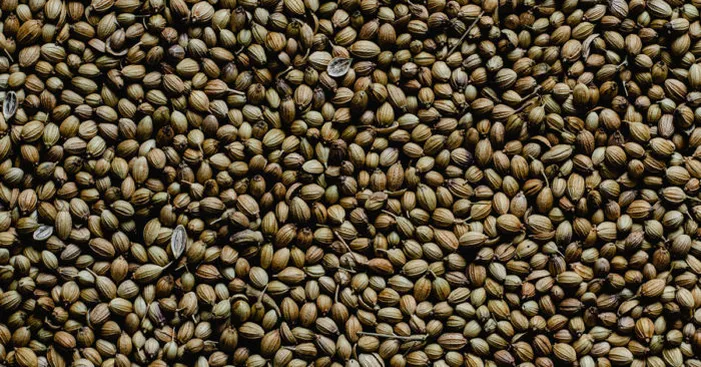
Helps with diabetes:
Many pieces of research show that el cilantro seeds can improve insulin sensitivity and lower blood sugar levels.
For instance, coriander seeds are rich in flavonoids, carotenoids, and polyphenols which have antioxidants and anti-inflammatory properties.
Thus, consuming coriander regularly can protect against diabetes-related complications like kidney or nerve damage.
Also, the compounds of coriander can also reduce cholesterol levels and prevent the risk of cardiovascular complications.
Not only that, these seeds are very low in calories and carbs and wouldn’t mess up a diabetes-friendly diet.
However, in case you have diabetes you should consult with your healthcare provider before consuming these seeds.
Promotes smooth digestion:
Not only do they help with diabetes, but these small seeds also help in the digestion of fats.
In fact, studies confirm that coriander contains bioactive compounds capable of breaking fats in the intestines and stomach.
In addition to the leaves of el cilantro, people use coriander seeds as a home remedy to treat bloating and gas.
Once we consume coriander, they stimulate bile acid formation which can promote faster and smoother digestion.
A remedy for arthritis:
The benefits of coriander grains for arthritis are mostly due to the abundance of antioxidants and anti-inflammatory compounds.
Arthritis is a very painful condition that is affecting the lives of many people and is characterized by joint inflammation.
Coriander can help with this condition thanks to its cineole and linoleic acid content which have anti-inflammatory properties.
For instance, many studies show that linoleic acid can prevent oxidative damage to the joints by fighting free radicals.
Good for anemia:
Being a good source of iron, these el cilantro grains can help in the case of anemia.
This condition occurs when the body doesn’t have enough iron supply to produce essential red blood cells.
As a result, patients who deal with anemia feel weak most of the time and experience fatigue and shortness of breath.
Coriander grains won’t only provide iron but also copper and vitamin C both known to increase iron absorption.
Promotes heart health:
El cilantro grains are a great source of antioxidants which can lower bad cholesterol levels and improve heart health.
This is because bad cholesterol levels in the blood clog the arteries and lead to thrombosis and strokes.
In addition, coriander offers a good amount of potassium which can regulate blood pressure.
Not only that, but these grains contain linalool which has a dilating and relaxing effect on blood vessels.
Moreover, they also contain anti-platelet properties which means they can prevent blood clots and thus the risk of strokes.
Other health benefits:
- Good for the hair.
- Offers anti-cancerous properties.
- Stimulates the production of collagen.
- Boosts the immune system.
- Treats fungal infections.
- Reduces acne and eczema inflammation.
Using cilantro for medicinal purposes:
Every part of el cilantro herb is beneficial, from the stem to the leaves and grains (more commonly known as coriander).
This explains why extracts of this plant are used in many cosmetic products and pharmaceutical drugs.
Using the leaves and stems:
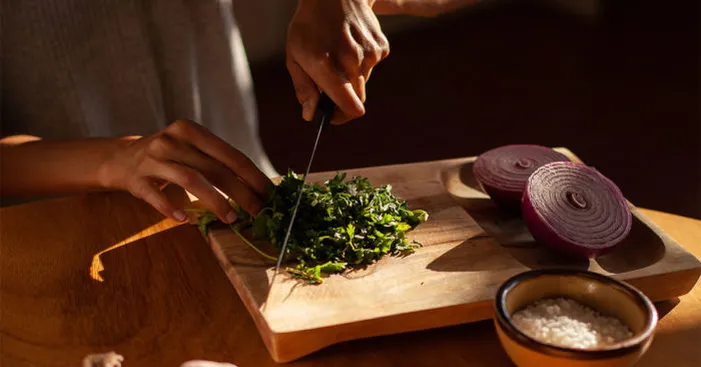
The famous Kebab in Georgia is often marinated with el cilantro leaves to elevate the flavor and improve digestion.
Here are many common uses of el cilantro in traditional medicines:
- Infusions to detoxify the liver.
- Oil extract of this plant can protect against inflammation.
- Coriander tea treats hemorrhoids.
- El cilantro leaves are added to the diet to promote weight loss.
Using the grains (coriander):
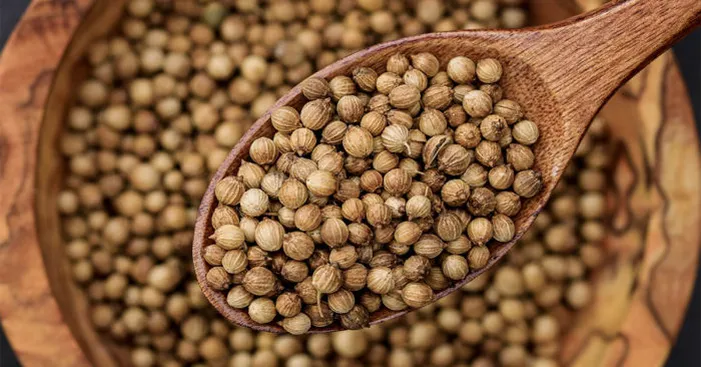
After buying good quality coriander grains make sure you wash them and then let them dry on a piece of cloth.
There are many ways you can use these seeds, here are some ideas:
- Lightly fry the grains and add them to a soup or casserole dish.
- Add coriander to your fish and meat seasoning.
- You can add it to bread, pizza, or pasta.
- Make tea using coriander grains.
- Ground it and use it as a spice for almost any savory dish.
However, there are some possible side effects related to this herb which is why if you notice any health deterioration make sure you consult a doctor.
Precautions you need to know before you use cilantro:

Despite all the health benefits of el cilantro, it is still not 100% free of side effects, no food is.
The daily recommended safe serving of a cilantro herb is limited to 35g per person.
Certain groups of people probably should avoid the consumption of this herb.
One of the myths about cilantro is that many people think that it may cause impotence for men.
However, there is no scientific evidence to back up these claims, if anything the many minerals and vitamins can increase testosterone levels.
Precautions before you consume el cilantro leaves and stems:
Here are the groups of people that should avoid consuming el cilantro:
Pregnant woman:
Being very vulnerable, women during pregnancy should not eat too much of this herb.
This is simply because cilantro is hot and spicy and can lead to uterine contractions or even miscarriages.
Also, pregnant women need to be aware of rotten or spoiled cilantro because it may cause abdominal pain and diarrhea.
Patients with gastric ulcers:
Because of the strong smell and spiciness of cilantro, it can easily increase the intensity of the gastric mucosa and cause pain.
Especially for patients with gastric ulcers, eating this herb could lead to complications and lower the chances of recovery.
Possible side effects of el cilantro grains (coriander):
Coriander grains are very famous around different cuisines and are considered safe for consumption.
The first thing that could be annoying for some people is the strong aroma of coriander grains.
They are more intense than el cilantro (the leaves and stems of the same plant) and some people don’t like that.
In fact, the intense smell of coriander can cause allergies even though there are no studies to confirm this.
Also, since these grains can reduce blood sugar levels therefore diabetic patients should be aware of overconsumption.
Finally, some people may experience a burning sensation in their mouths, skin rash, or very rarely have an anaphylactic reaction.
Because of all of that, people with diabetes, pregnant women, and those with a history of allergies should avoid consuming coriander.
Buying el cilantro:
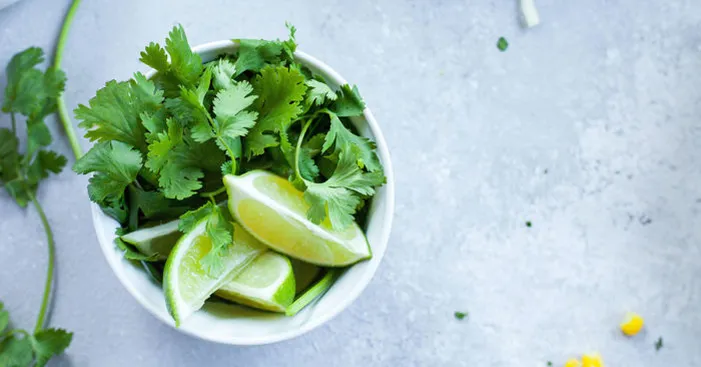
When you buy el cilantro, make sure you choose aromatic leaves that look green and not damaged or stained.
If the leaves are yellow or have non-uniform color patterns, they are old and probably lost many nutrients already.
To have a better idea, the leaves of el cilantro are very similar to flat-leaf parsley but they have the unique fragrance of coriander.
However, if you are buying el cilantro grains (coriander) make sure you get the yellow ones that have the same size as a peppercorn.
Even if you want to use ground coriander, you should always get whole grains and grind them yourself.
This is because ground coriander loses its nutrients and flavor very fast therefore grind it right before usage.
Storing el cilantro:
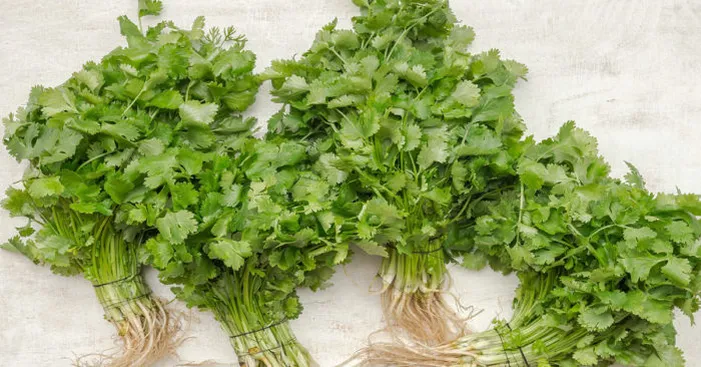
You can store el cilantro in the same way you store your other herbs (parsley, oreganos…).
To do that, you only need to trim the bottom of the stems and then put them in a jar submerged partially in water (just the stems).
You can then put the jar in the refrigerator and change the water when its color changes.
By doing that you can store el cilantro for up to 2 weeks.
In addition, you can dry el cilantro and keep the dried herb in a sealed glass container for up to 1 year.
However, you should know that dried cilantro loses its freshness which results in a lower fragrance.
In case you bought el cilantro grains (coriander) you can also store them in a glass-sealed jar for up to 1 year.
Finals thoughts:
El cilantro is the name used in the United States to describe the leaf and stems of the coriander plant.
On the other hand, we use the word “coriander” to refer to the peppercorn-shaped grains of the cilantro plant.
Globally, coriander is the word used to describe both parts of the plant simply by saying “coriander” and “coriander grains”.
Even though they come from the same plant, el cilantro and coriander have different nutritional compositions and aromas.
This plant is full of nutrients and has many health benefits that may differ depending on the part of the plant.
For instance, el cilantro herb (leaves and stems) can:
- Good for the immune system.
- Great antioxidant properties.
- Promotes healthier blood circulation.
- Helps with digestion.
- Fights skin infections.
- Reduces inflammation.
- Enhances testosterone levels.
- Nurtures the nervous system.
- Good for the hair.
- Helps with depression.
While coriander grains are:
- Promotes healthy hair.
- Increases the production of collagen.
- Fights acne and eczema.
- Reduces the risk of cancer.
- Boosts the immune system.
This plant may have side effects, especially for those who have previous allergies, pregnant women, and diabetic patients.
Finally, el cilantro is a close relative of parsley and has many nutrients that can definitely boost our overall health.
Thus, try including more el cilantro in your recipes which will certainly promote a healthier lifestyle.
